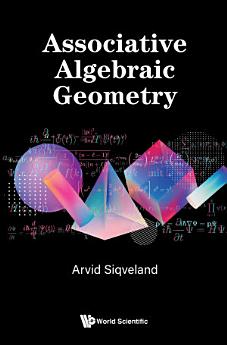Associative Algebraic Geometry
ก.พ. 2023 · World Scientific
eBook
420
หน้า
family_home
มีสิทธิ์
info
reportคะแนนและรีวิวไม่ได้รับการตรวจสอบยืนยัน ดูข้อมูลเพิ่มเติม
เกี่ยวกับ eBook เล่มนี้
Classical Deformation Theory is used for determining the completions of local rings of an eventual moduli space. When a moduli variety exists, the main result explored in the book is that the local ring in a closed point can be explicitly computed as an algebraization of the pro-representing hull, called the local formal moduli, of the deformation functor for the corresponding closed point.The book gives explicit computational methods and includes the most necessary prerequisites for understanding associative algebraic geometry. It focuses on the meaning and the place of deformation theory, resulting in a complete theory applicable to moduli theory. It answers the question 'why moduli theory', and gives examples in mathematical physics by looking at the universe as a moduli of molecules, thereby giving a meaning to most noncommutative theories.The book contains the first explicit definition of a noncommutative scheme, not necessarily covered by commutative rings. This definition does not contradict any previous abstract definitions of noncommutative algebraic geometry, but sheds interesting light on other theories, which is left for further investigation.
ให้คะแนน eBook นี้
แสดงความเห็นของคุณให้เรารับรู้
ข้อมูลในการอ่าน
สมาร์ทโฟนและแท็บเล็ต
ติดตั้งแอป Google Play Books สำหรับ Android และ iPad/iPhone แอปจะซิงค์โดยอัตโนมัติกับบัญชีของคุณ และช่วยให้คุณอ่านแบบออนไลน์หรือออฟไลน์ได้ทุกที่
แล็ปท็อปและคอมพิวเตอร์
คุณฟังหนังสือเสียงที่ซื้อจาก Google Play โดยใช้เว็บเบราว์เซอร์ในคอมพิวเตอร์ได้
eReader และอุปกรณ์อื่นๆ
หากต้องการอ่านบนอุปกรณ์ e-ink เช่น Kobo eReader คุณจะต้องดาวน์โหลดและโอนไฟล์ไปยังอุปกรณ์ของคุณ โปรดทำตามวิธีการอย่างละเอียดในศูนย์ช่วยเหลือเพื่อโอนไฟล์ไปยัง eReader ที่รองรับ




